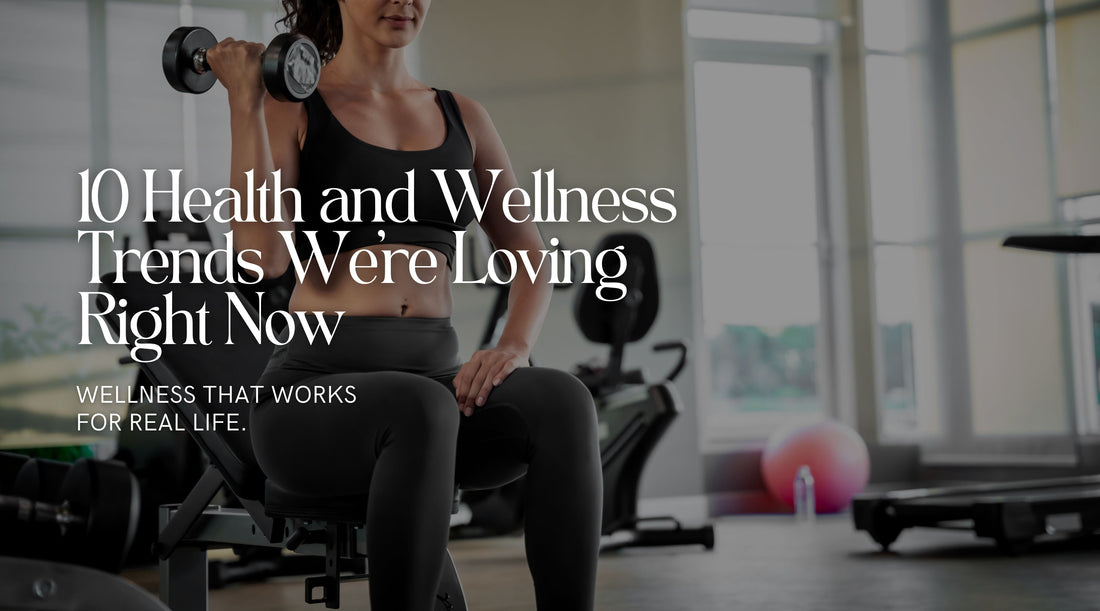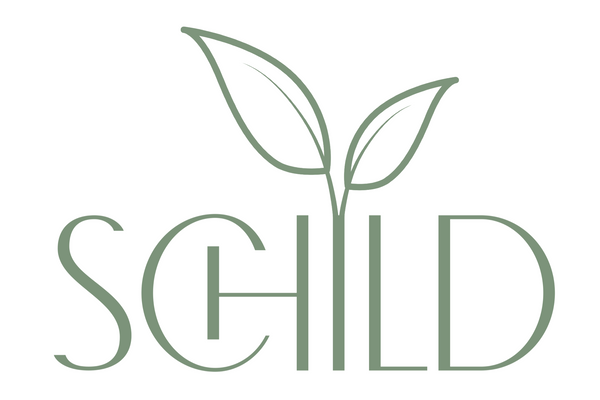
10 Health and Wellness Trends We’re Loving Right Now
Share
Wellness That Works for Real Life
Wellness in 2025 isn’t about chasing perfection it’s about building habits that help you feel strong, balanced, and energised for the long haul. This year, we’re seeing a return to foundational health: movement, nourishment, and understanding our bodies on a deeper level. Whether you’re a seasoned fitness lover or just starting your journey, these trends are here to support you no complicated gadgets required.
1. Women Building Muscle: Strength for Every Stage of Life
Gone are the days when muscle-building was just for bodybuilders. Women of all ages are embracing strength training, and for good reason. Building muscle isn’t about “bulking up” it’s about staying strong, independent, and vibrant as you age.
Why Muscle Matters:
- Protects bone health and slows bone thinning, reducing osteoporosis risk.
- Boosts metabolism for easier weight management.
- Improves balance and flexibility, lowering the risk of falls and injuries.
- Supports joint health and can ease arthritis symptoms.
- Enhances confidence and mental well-being.
How to Get Started:
- Try bodyweight exercises (squats, push-ups), resistance bands, or light weights.
- Focus on form and consistency over heavy lifting.
- Don’t be afraid to ask for guidance at your local gym—many trainers specialise in helping women build strength safely.
2. The Walking Boom: Why 10,000 Steps Still Matter
Walking is having a major moment, and it’s not just about hitting a number on your fitness tracker. The “10,000 steps” trend is encouraging people of all ages to move more, and the science backs up the benefits.
Benefits of Walking:
- Reduces risk of chronic disease, including heart disease, type 2 diabetes, stroke, and certain cancers.
- Boosts mood and mental health by releasing endorphins, reducing anxiety and depression.
- Supports brain health, lowering the risk of dementia and improving mental clarity.
- Improves joint and bone health, especially for those with arthritis or osteoporosis.
- Aids weight management with significant calorie burn over time.
Pro Tip:
Don’t stress if you’re not hitting 10,000 steps daily. Every bit of movement counts, and even small increases can make a big difference in your health.
3. Hormonal Health: The Building Blocks to Wellness
There’s a growing awareness that hormones are the body’s master messengers, influencing everything from mood to metabolism. Understanding and supporting hormonal health is crucial, especially for women navigating life’s many stages.
Why Hormones Matter:
- Affect mood and mental health; imbalances can trigger anxiety, depression, and mood swings.
- Influence energy and sleep; hormones like oestrogen and progesterone affect sleep quality and daily energy.
- Impact weight and metabolism, appetite, fat storage, and muscle mass.
- Shape reproductive and bone health during puberty, pregnancy, and menopause.
Ways to Support Hormonal Balance:
- Prioritise sleep and stress management.
- Eat a balanced diet rich in healthy fats and whole foods.
- Stay active regular exercise helps regulate hormones naturally.
4. Gut Health Revolution: Beyond Probiotics
Gut health is still in the spotlight, but the conversation is evolving. It’s not just about yoghurt and kombucha anymore nourishing your microbiome means enjoying a variety of gut-friendly foods.
Gut-Boosting Foods:
- Fermented foods: sauerkraut, kimchi, kefir, and miso.
- Bone broth: rich in amino acids and minerals, supports digestion, joint health, and sleep.
- Fibre-rich plants: beans, lentils, oats, and a rainbow of veggies feed your good bacteria.
Why Gut Health Matters:
- Improves digestion and nutrient absorption.
- Strengthens immunity your gut is your first line of defence.
- Boosts mood through the gut-brain connection.
5. Ditching the Low-Fat Diet: The Comeback of Healthy Fats
Remember when “low-fat” was all the rage? Luckily we now know healthy fats are essential for hormone production, brain function, and overall vitality.
Why Healthy Fats Matter:
- Support hormones—fats are building blocks for oestrogen, progesterone, and other key hormones.
- Aid nutrient absorption—vitamins A, D, E, and K need fat to be absorbed by the body.
- Promote heart health—unsaturated fats from olive oil, nuts, seeds, and fish lower disease risk.
- Keep you satisfied—fats help you feel full, reducing cravings for processed carbs.
What to Eat:
- Avocados, nuts, seeds, fatty fish (like salmon), olive oil, and full-fat yoghurt in moderation.
- Limit processed foods and trans fats; focus on whole, minimally processed options.
6. Mindful Movement: Yoga, Pilates, and Stretching
While strength and cardio are vital, gentle movement practices are gaining traction for their ability to reduce stress, improve flexibility, and support recovery. Yoga and Pilates are especially popular for building core strength and enhancing mobility at any age.
7. Sleep as a Wellness Superpower
Quality sleep is finally getting the attention it deserves. Consistent, restorative sleep supports everything from muscle recovery to hormone regulation and mental clarity. Simple habits like setting a regular bedtime, minimising screens before bed, and creating a calming nighttime routine can make a world of difference.
8. Social Wellness: Community Over Competition
The pandemic taught us the value of connection. Group walks, fitness classes, and community cooking nights are on the rise, reminding us that wellness is more fun—and sustainable—when shared.
9. The Power of Natural Elements: Sun, Earth, and Sea for Health and Vitality
In our increasingly indoor and digital lives, reconnecting with natural elements is proving to be a powerful wellness trend. Safe sun exposure, grounding (earthing), and spending time by the sea are more than just feel-good activities—they have real, evidence-based benefits for our health.
Safe Sun Exposure: More Than Just Vitamin D
Sunlight is our primary source of vitamin D, a crucial nutrient that supports bone health, immune function, and mood regulation. Research shows that moderate sun exposure helps the skin produce vitamin D, which in turn can reduce the risk of hypertension, certain cancers, and autoimmune diseases. For example, studies have found that adequate vitamin D levels are linked to lower blood pressure and improved cardiovascular health.
Of course, sun safety is paramount, especially in Australia where UV levels can be very high. Experts recommend short, regular sun exposure during low to moderate UV times, combined with protective measures like clothing and sunscreen when UV levels are high. This balanced approach helps us reap the benefits of sunlight while minimising the risks of skin damage.
Grounding: Connecting to the Earth’s Energy
Grounding involves direct physical contact with the earth, such as walking barefoot on grass, sand, or soil. Scientific studies suggest grounding can reduce inflammation, improve immune response, and enhance sleep quality For instance, research has shown that grounding lowers blood markers of inflammation and helps regulate cortisol, the stress hormone, leading to better stress management and sleep patterns.
Athletes have also reported faster recovery and reduced pain when practising grounding regularly. While more research is needed, the current evidence supports grounding as a simple, natural way to recharge our bodies and support overall wellness.
10. Progressive Technologies: Red Light Therapy and Beyond
Wellness in 2025 embraces both nature and innovation. Among the exciting advances are therapies like red light therapy, which harness specific wavelengths of light to stimulate cellular function and promote healing.
What is Red Light Therapy?
Red light therapy (RLT) uses low-level wavelengths of red and near-infrared light to penetrate the skin and activate mitochondria, the energy powerhouses of our cells. This process boosts the production of adenosine triphosphate (ATP), which fuels cellular repair and regeneration.
Health Benefits of Red Light Therapy
Clinical studies have demonstrated that RLT can reduce inflammation, accelerate wound healing, and alleviate chronic pain conditions such as arthritis and tendinitis.. It also promotes collagen production, improving skin health and reducing signs of ageing.
Athletes use red light therapy to speed muscle recovery and reduce soreness after intense workouts. Additionally, RLT has been shown to improve circulation by increasing nitric oxide production, which dilates blood vessels and enhances oxygen delivery to tissues.
Mental health benefits are also emerging, with red light exposure linked to increased serotonin production, potentially helping to alleviate depression and anxiety symptoms.
Safety and Accessibility
Red light therapy is generally safe with minimal side effects, such as mild temporary redness. Devices range from professional clinical setups to at-home panels and handheld devices, making this technology increasingly accessible.
Try it:
- Explore red light therapy sessions at wellness centres or clinics.
- Consider at-home red light devices for regular use, following manufacturer guidelines.
- Combine RLT with other recovery practices like stretching and hydration.
Takeaway: Wellness That Empowers
This year’s top trends are about building a strong foundation: muscle, movement, nourishment, nature, and self-awareness. Whether you’re lifting weights, lacing up your walking shoes, embracing the outdoors, or exploring new therapies, remember—wellness is a journey, not a destination. Choose what feels good, stay curious, and celebrate every step forward.
